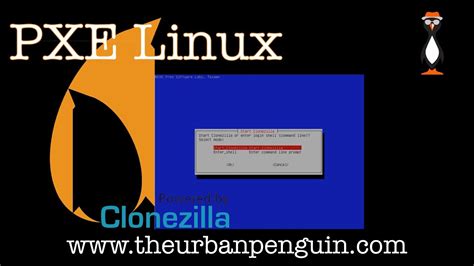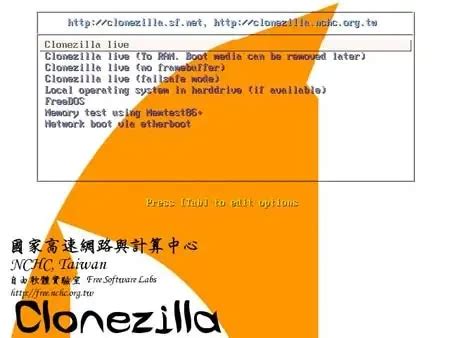pxe boot clone manual | clonezilla boot pxe boot clone manual When target machines do PXE boot, they can restore the Clonezilla image from the File Server to the target disk automatically without any interaction. Here is the reference: Run a Clonezilla . From woody wonders to aromas that drive the ladies crazy, these Creed Aventus alternatives are easily the best way to smell expensive without breaking the bank. They’re long-lasting,.
0 · clonezilla live on pxe
1 · clonezilla live boot usb
2 · clonezilla boot disk
3 · clonezilla boot
Help. SIM plans. International Roaming Troubleshooting Guide. INTERNATIONAL ROAMING TROUBLESHOOTING GUIDE. This support article will help you troubleshoot while roaming overseas. If you're looking to find our International Roaming packs, you can find information on how to purchase them, here. Network & device settings. App settings.
clonezilla live on pxe
Clonezilla Live on PXE Server. Besides Clonezilla Live CD and Live USB, Clonezilla Live can be put on a PXE server so that a client can be booted via network to use Clonezilla live. This is .
Clonezilla is restoring disk image on 2nd disk (sdb) to 1st disk (sda) Disk to disk clone. Description: Clone small disk to larger disk (e.g. 20 GB to 60 GB) (Step by step) Prepare .Once you have the bootable Clonezilla Live media, as created in the previous step, you can boot it in the machine you want to clone. Remember to use the Clonezilla live media, such as CD, . Comprehensive documentation of the PXE Boot process and a clear record of configurations are invaluable for troubleshooting and maintenance. It includes noting down the details of DHCP options, network paths of boot .
chanel water fresh tint shade finder
clonezilla live boot usb
When target machines do PXE boot, they can restore the Clonezilla image from the File Server to the target disk automatically without any interaction. Here is the reference: Run a Clonezilla .
Even though you can boot to the Clonezilla DVD, it is more convenient to PXE deploy Clonezilla to systems that need it. So, in this blog, we look at a PXE deploy of .Creates a template boot entry file for client computers booting over network with option to make a disk or partition backup, and boot directly to Clonezilla Live for manual backup and restore. System Requirements. Installation of FreeBSD . PXE (Pre eXecution Environment), affectionately pronounced Pixie (as in fairy dust), is a method of having an end computer (client) boot using only its network card. Your best option for one or two cloned drives would be a product that boots into the clone software, clonzilla gets a lot of thumbs up on Spiceworks (So YES), I like Acronis .
Clonezilla Live on PXE Server. Besides Clonezilla Live CD and Live USB, Clonezilla Live can be put on a PXE server so that a client can be booted via network to use Clonezilla live. This is how: Prepare a PXE server. You may refer to some doc, e.g. this one or .
Clonezilla is restoring disk image on 2nd disk (sdb) to 1st disk (sda) Disk to disk clone. Description: Clone small disk to larger disk (e.g. 20 GB to 60 GB) (Step by step) Prepare Clonezilla live. Boot your Clonezilla live via USB. Choose "ToRAM" option in the boot menu. Choose language.Once you have the bootable Clonezilla Live media, as created in the previous step, you can boot it in the machine you want to clone. Remember to use the Clonezilla live media, such as CD, USB flash drive, USB hard drive, hard drive or PXE to boot the machine. Comprehensive documentation of the PXE Boot process and a clear record of configurations are invaluable for troubleshooting and maintenance. It includes noting down the details of DHCP options, network paths of boot files, versions of NBPs, and any custom configurations applied.
Cloning software can be used in more complex scenarios than just creating an image of a disk or a partition. One can set up a server that can be used for booting the machines to be cloned via PXE, run a imaging script automatically then shutdown the imaged machine.When target machines do PXE boot, they can restore the Clonezilla image from the File Server to the target disk automatically without any interaction. Here is the reference: Run a Clonezilla lite server to do massive deployment from an image via multicast mechanism Even though you can boot to the Clonezilla DVD, it is more convenient to PXE deploy Clonezilla to systems that need it. So, in this blog, we look at a PXE deploy of Clonezilla to a netbook client. For this you will need a PXE Linux Server up and running which we demonstrated on Ubuntu 16.04 in this previous lesson.
chanel water fresh tint colour match
Creates a template boot entry file for client computers booting over network with option to make a disk or partition backup, and boot directly to Clonezilla Live for manual backup and restore. System Requirements. Installation of FreeBSD 12.1 or greater. Minimum 4GB of RAM recommended. Desktop or server with minimum two NIC's installed.
PXE (Pre eXecution Environment), affectionately pronounced Pixie (as in fairy dust), is a method of having an end computer (client) boot using only its network card.
Your best option for one or two cloned drives would be a product that boots into the clone software, clonzilla gets a lot of thumbs up on Spiceworks (So YES), I like Acronis personally for that type of thing.
Clonezilla Live on PXE Server. Besides Clonezilla Live CD and Live USB, Clonezilla Live can be put on a PXE server so that a client can be booted via network to use Clonezilla live. This is how: Prepare a PXE server. You may refer to some doc, e.g. this one or .Clonezilla is restoring disk image on 2nd disk (sdb) to 1st disk (sda) Disk to disk clone. Description: Clone small disk to larger disk (e.g. 20 GB to 60 GB) (Step by step) Prepare Clonezilla live. Boot your Clonezilla live via USB. Choose "ToRAM" option in the boot menu. Choose language.Once you have the bootable Clonezilla Live media, as created in the previous step, you can boot it in the machine you want to clone. Remember to use the Clonezilla live media, such as CD, USB flash drive, USB hard drive, hard drive or PXE to boot the machine. Comprehensive documentation of the PXE Boot process and a clear record of configurations are invaluable for troubleshooting and maintenance. It includes noting down the details of DHCP options, network paths of boot files, versions of NBPs, and any custom configurations applied.
Cloning software can be used in more complex scenarios than just creating an image of a disk or a partition. One can set up a server that can be used for booting the machines to be cloned via PXE, run a imaging script automatically then shutdown the imaged machine.When target machines do PXE boot, they can restore the Clonezilla image from the File Server to the target disk automatically without any interaction. Here is the reference: Run a Clonezilla lite server to do massive deployment from an image via multicast mechanism
Even though you can boot to the Clonezilla DVD, it is more convenient to PXE deploy Clonezilla to systems that need it. So, in this blog, we look at a PXE deploy of Clonezilla to a netbook client. For this you will need a PXE Linux Server up and running which we demonstrated on Ubuntu 16.04 in this previous lesson.Creates a template boot entry file for client computers booting over network with option to make a disk or partition backup, and boot directly to Clonezilla Live for manual backup and restore. System Requirements. Installation of FreeBSD 12.1 or greater. Minimum 4GB of RAM recommended. Desktop or server with minimum two NIC's installed. PXE (Pre eXecution Environment), affectionately pronounced Pixie (as in fairy dust), is a method of having an end computer (client) boot using only its network card.

clonezilla boot disk

You can switch from an Amazon Prime membership for a specific country to a Prime membership in another country. To switch your Amazon Prime membership: End your current Prime membership or cancel your free trial membership. Go .
pxe boot clone manual|clonezilla boot


























